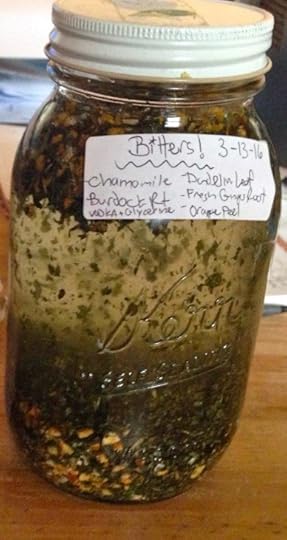Rebecca Lerner's Blog
October 1, 2016
Saying farewell to this blog
 Dear readers, thank you so very much for following me on the First Ways journey from budding urban forager to author of Dandelion Hunter, herbalist, teacher and beyond. Thank you for your comments and emails and support over the eight years I have been writing on this site about plants. Thank you for buying my book, Dandelion Hunter, and feeling its message of respect and connection with nature resonate deeply in your soul and awaken or expand your own.
Dear readers, thank you so very much for following me on the First Ways journey from budding urban forager to author of Dandelion Hunter, herbalist, teacher and beyond. Thank you for your comments and emails and support over the eight years I have been writing on this site about plants. Thank you for buying my book, Dandelion Hunter, and feeling its message of respect and connection with nature resonate deeply in your soul and awaken or expand your own.
Changes are afoot. I will be deleting this site on the full moon, Saturday Oct 15, and the corresponding Facebook fan page, now nearly 7,000 people strong, the day before, because autumn decluttering extends to cyberspace. I have enjoyed learning about plants and sharing my fascination with you over the years, but this subject simply is no longer filling my heart with joy and wonder. I have learned all that I wanted to learn, taught all I wanted to teach, and now it’s time to evolve into the next expression of my calling. Instead of using my recall skills and pattern recognition to identify plants and share information about them, I want to live in my heart and speak with my soul.
My passion and creativity has been flowing into my work as a spiritual teacher and multidimensional energy healer, which I have been doing since 2012 and enjoy it immensely. There is nothing so wonderful as helping people evolve and transform in to greater peace and happiness, getting to act as a conduit and facilitator between this plane and the world of spirit. And I have a lot to say about it: You will likely see books from me on these subjects, under my new name, in coming years.
to greater peace and happiness, getting to act as a conduit and facilitator between this plane and the world of spirit. And I have a lot to say about it: You will likely see books from me on these subjects, under my new name, in coming years.
I would love for you to visit me at my new home on the web, at IntuitiveTaraRose.com If you enjoy my writing, and would like to continue on this next leg of the journey with me, then be sure to sign up for my newsletter on the site. You can also stay in touch on my new Facebook page you can “like” at www.facebook.com/IntuitiveTaraRose
Onward!
August 22, 2016
NEW: Coastal Mushroom Foraging Adventure!
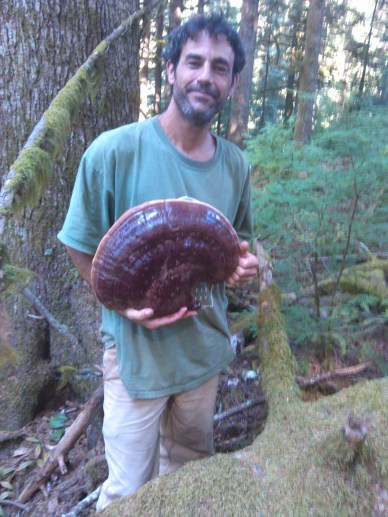
Mushroom Jordan holds a medicinal reishi mushroom!
Join the First Ways apprentices and professional fungi forager “Mushroom Jordan” Weiss on Saturday September 10 for an adventure in mushroom identification and harvesting hike along Oregon’s north coast! We will be meeting out there at noon in a secret spot Jordan has arranged for us, hike and explore for four or five hours, and then head home with an enviable array of culinary delights!
If you’ve been curious about mushroom foraging, this is truly not-to-miss!
Some of the mushrooms we are likely to collect include:
– Chanterelles(Golden and Rainbow)
– Shrimp russula
– Lobster Mushrooms
– Chicken of the Woods
– Reishi
– Red-belt Polypore
– Artist Conk
And if we are lucky, we may also collect these species:
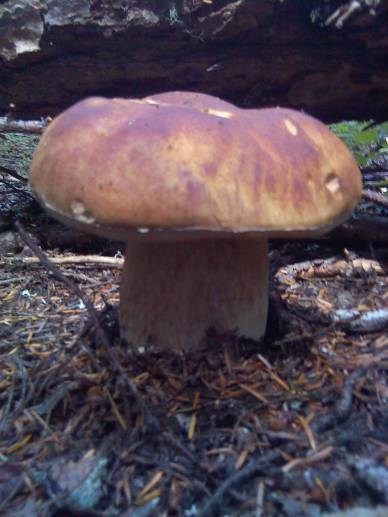
King Bolete
– Imperial Cat
– King Bolete
– Red-Cracked Cap Bolete
– Oysters
– Prince mushrooms
– Hedgehog mushrooms
The best mushroom field guide, according to Jordan, for our region in the Pacific Northwest is “Mushrooms of the Pacific Northwest” by Joe Ammirati and Steve Trudell. He says “All the Rain Promises” by David Arora is a “close second.”
Date: Saturday September 9
Time: Noon to 4 or 5 pm
Where: Secret location on the North Coast, to be disclosed to participants close to date to ensure fruitful harvest
We are limiting this adventure to 20 people total, and half the spots are already taken. So, if this adventure has your name on it, make sure to get your spot now before it sells out! Click here.
August 3, 2016
April 26, 2016
Poison Oak: What Every Hiker Needs to Know

Courtesy USF.edu
Poison Oak, Toxicodendron diversilobum, is one plant every hiker needs to know. The shiny oils on the leaf surface can cause severe allergic reactions on the skin, a blistering rash that can take anywhere from 12 hours to 10 days after exposure to show up. Even a brush with dead leafless branches of this plant can provoke severe irritation for years after it has completed its earthly lifespan!
It grows from Baja California to British Columbia west of the Cascade Range of mountains as well as Nevada, according to the USDA Plants Database. But before we discover how to identify it, lets take a moment to consider its more appealing qualities.
What’s GOOD about Poison Oak?

Poison Oak photo by Cathie Bell
Deer eat the leaves, many birds eat the fruit and towhees make nests out of it, and small mammals take shelter in this plant. The human ethnobotanical records are fascinating too and show that indigenous people have historically embraced Poison Oak in surprising ways. As I wrote in my book Dandelion Hunter, “Before there was a plant for that, there was an app for that.” Check this out:
– Mendocino people burned it over the skin as a cure for ringworm and warts! This technique is called “moxa” in herbalism. But inhaling the smoke of this plant would be very dangerous, indeed.
– Tolowa people ate flower buds in the spring to obtain immunity from the plant poisons! California survival expert Christopher Nyerges says he does the same thing and that it works for him!
– Multiple tribes made a black pigment from the burned ashes of the plant and used it for tattoos and dye!
– There’s even record of it being used topically as antidote for rattlesnake bites! (Now this is one I would not volunteer to test out!)
How to Identify Poison Oak
Poison Oak, Toxicodendron diversilobum, is quite crafty at disguise: It can change form, growing as a vine (sometimes winding its way up a tree trunk), shrub, or herbaceous plant — even mimicking a similar looking harmless plant it is growing near! And the leaf color can range from green to vibrant red.
1) Poison oak leaves have wavy, scalloped edges and are usually glossy and shiny.
2)”Leaves of 3, let it be.” Poison oak is trifoliate. It has three leaflets. One pair of leaflets is attached to the main stem directly, while the terminal leaflet (the one on the end) has a longer stem separating it from the bunch. You can see this demonstrated in the photos below.
Also, there’s a related species here in the Willamette Valley that is known as Western Poison Ivy,Toxicodendron rydbergii. It is a hybrid of poison oak mixed with western poison ivy. It looks extremely similar except the leaf edges are toothed and the shape is more oval, less wavy.
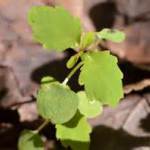

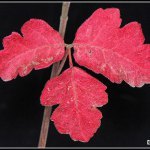
Identification can be tricky. Harmless berry vines such as blackberry also have 3-part leaves — but those are large, angular and have serrated edges. In the Pacific Northwest, the lobed, oak-like leaves of Poison Oak can be easily confused with the harmless and similar looking bushes Snowberry, Symphoricarpos albus, as well as Oceanspray, Holodiscus discolor, or the young leaves of a sprouting Oregon White Oak tree, Quercus garryana.
Lookalikes – These Are NOT Poison Oak:
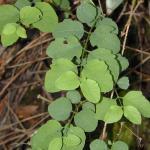

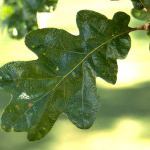
If you do get exposed, what can you do?
The U.S. Center for Disease Control (CDC) says there’s a chance you may be able to remove the irritating urushiol oil by washing with dish soap and warm water, or by swabbing your skin with isopropyl rubbing alcohol. There’s also a product on the market called Tecnu that is advertised to do the same.
If it’s too late to wash it off and you find yourself with serious dermatitis, unfortunately most people say that conventional over-the-counter remedies of calamine lotion and oral antihistamine tablets do not help. Taking a hot shower can bring some temporary relief. Some people also say the rash began to heal and stop itching after they rubbed baking soda paste (mixed with water) on their rash and then showered it off, followed by applying a vinegar wash that stung initially.
What about herbal remedies?
The famous and well-loved southwestern folk herbalist Kiva Rose, co-founder/editor of the wonderful herbal journal Plant Healer, suggests as a remedy for urushiol-induced dermatitis to “apply diluted vinegar or tinctures of Mugwort (make sure you don’t have an Aster allergy first of course), Plantain, Yarrow and Rose leaf/petal. Oatmeal, Mallow and Rose petal baths can be helpful too.”
Other possible remedies include crushed jewelweed stems on the skin or a cooling aloe vera poultice.
How can you get rid of it if it grows in your yard?
Please don’t use chemical pesticides. Instead, pour boiling water on it, and/or squirt vinegar on it, and then dig up the roots, wear gloves and pull them and discard the plant (and then get rid of those gloves) — or better yet, hire a goat to eat it!
**
Wilderness First Aid
If you are one of those people who, like me, is looking forward to spending as much as time as possible this summer hiking and camping, but sometimes feel a little nervous about it because you don’t have wilderness first aid training and wouldn’t know what to do in an emergency, then you’re in luck, because the weekend of May 13-15 the world-renowned expert on this subject, Sam Coffman, is flying in to Portland from Texas to teach a three-day camping immersion on the subject that will get you certified in Wilderness First Aid plus 8 hours of herbal first aid training. It’s a lot of fun to sleep under the stars, have bonfires and go swimming in the Little Klickitat River. You’ll go home with confidence, plus two textbooks to keep as reference tools, one of which was written by Sam himself. The location for this experience is very beautiful and private, with a hot tub and catered home-cooked meals. You have until May 2 to sign up. Join me!
Share this post!
April 24, 2016
Wild Valerian: Medicine of the Columbia Gorge
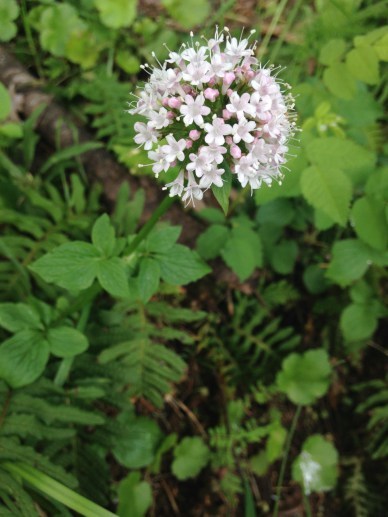
Sitka Valerian, photo by Tara Rose
I had just parked at a beautiful waterfall in the Columbia Gorge and was on my way to lead a hike for my First Ways apprentices on Saturday when I spotted this lovely mystery flower. I was curious as to what it was, and simultaneously felt a strong intuitive hunch that it was Valerian. I got out my trusty Plants of the Pacific Northwest Coast field guide to confirm or deny this hunch. I looked up “Valerian” in the index, turned to page 333, and –hurray! — found a matching photo. (Can I call myself a “plant whisperer?”)
Indeed, write the authors, Valeriana sitchensis is common at subalpine elevations in moist, open forest. The flowers, the book noted, are white and pale pink with long stamens. The leaves are opposite and divided into 3 to 7 coarsely toothed leaflets.
A related species, Valeriana officinalis, known as Valerian root, is a widely used herbal sedative. It tends to be polarizing in that some find the root enticingly sweet smelling — like I do — and others think it stinks. I believe this is because our biochemistry naturally interacts with the chemistry of the herb and indicates to us through our senses whether it is a good match for us. For those for whom it is unappealing, there are many alternatives that can do a similar job of relaxation and assistance for those sleepless nights, especially Passionflower, Skullcap and Kava Kava.
I’m the only person I have met who took Valerian root medicine by smoking it, which I did on a whim mixed with mullein because mullein is a lung medicine. I was experimenting with nervine smoke blends for a time.
I was curious about whether this wild herb could be used similarly. The field guide alluded to some native medicinal uses for this variety but did not get specific, so I got out my giant expensive ethnobotanical encyclopedia by Daniel Moerman to learn what is in the official academic records. Here I learned that, like the more widely used variety, it is the root of Valeriana sitchensis that has a history of medicinal use. Interestingly, it is recorded many times over as a cold and flu remedy, and also as part of a smoke mixture blend with tobacco for ceremonial purposes.
**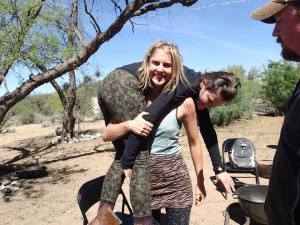 If you are one of those people who, like me, is looking forward to spending as much as time as possible this summer hiking and camping, but sometimes feel a little nervous about it because you don’t have wilderness first aid training and wouldn’t know what to do in an emergency, then you’re in luck, because the weekend of May 13-15 the world-renowned expert on this subject, Sam Coffman, is flying in from Texas to teach a three-day camping immersion on the subject that will get you certified in Wilderness First Aid plus 8 hours of herbal first aid training. It’s a lot of fun to sleep under the stars, have bonfires and go swimming in the Little Klickitat River. You’ll go home with confidence, plus two textbooks to keep as reference tools, one of which was written by Sam himself. The location for this experience is very beautiful and private, with a hot tub and catered home-cooked meals. There’s just one week left to sign up. Join me!
If you are one of those people who, like me, is looking forward to spending as much as time as possible this summer hiking and camping, but sometimes feel a little nervous about it because you don’t have wilderness first aid training and wouldn’t know what to do in an emergency, then you’re in luck, because the weekend of May 13-15 the world-renowned expert on this subject, Sam Coffman, is flying in from Texas to teach a three-day camping immersion on the subject that will get you certified in Wilderness First Aid plus 8 hours of herbal first aid training. It’s a lot of fun to sleep under the stars, have bonfires and go swimming in the Little Klickitat River. You’ll go home with confidence, plus two textbooks to keep as reference tools, one of which was written by Sam himself. The location for this experience is very beautiful and private, with a hot tub and catered home-cooked meals. There’s just one week left to sign up. Join me!
** In cultures all over the world, indigenous people learn about the medicinal properties of wild plants through meditation, dreams and visionary experiences with entheogens (psychoactive plant medicines). Every one of us is indigenous to this planet and has the same capability. Explore your intuitive side with me in my upcoming Plant Spirits, Ganja & The Chakras series.
In cultures all over the world, indigenous people learn about the medicinal properties of wild plants through meditation, dreams and visionary experiences with entheogens (psychoactive plant medicines). Every one of us is indigenous to this planet and has the same capability. Explore your intuitive side with me in my upcoming Plant Spirits, Ganja & The Chakras series.
These events are detailed on my Plant Spirit Reiki website here. They are also listed on MeetUp; if you’re in the Portland, Oregon area, you can find the events listed on my group page, which is called Ascending Lightworkers of Portland.
**
In case you didn’t know this, I did change my name this January to Tara Rose. So when you see all this stuff about Tara Rose and you’re wondering who that is, yes, that’s me, the same person who has been blogging on this website since 2008!
April 11, 2016
How to: Treat a Snakebite with Herbs!
How to: Treat a Rattlesnake Bite with Herbs!
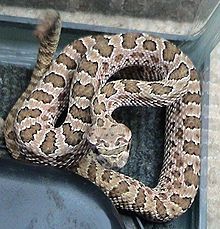
Image by Wikipedia
Oregon has 15 species of native snakes, and fortunately only one of those is venomous: That would be the Western Rattlesnake, Croatus viridus. According to the Department of Fish and Wildlife, they are found in southwestern Oregon, the mid- to southern Willamette Valley, the Columbia Plateau and south central and southeastern Oregon. They average 1.5 to 4 feet in length and are most commonly seen near their dens, typically rock crevices near sunshine. They are most likely to be seen during the spring and fall when moving to and from hibernation sites. They only attack if threatened, but if they do, their venom can be lethal.
What should you do in the unlikely event that you or a companion gets bit while hiking? I turned to Sam Coffman‘s book, “The Herbal Medic,” to find out. Sam is a former Special Forces Green Beret medic who is now a world-renowned herbalist known for flying into disaster areas and third-world countries to provide natural medical care. And he’s coming to teach a three-day camping intensive for First Ways on Wilderness First Aid next month, where he’ll be covering snake bites among other injuries and issues in this awesome course.
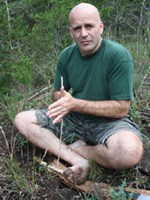 The good news, Sam writes, is that 20% of rattlesnake bites are “dry” bites that don’t contain venom. Another 30 to 40% are only mildly venomous because the snake decided it didn’t want to go full-throttle and empty its poison stores. That means we have a 50 to 60% chance that we’re going to be just fine. But what do we do if we’re unlucky?
The good news, Sam writes, is that 20% of rattlesnake bites are “dry” bites that don’t contain venom. Another 30 to 40% are only mildly venomous because the snake decided it didn’t want to go full-throttle and empty its poison stores. That means we have a 50 to 60% chance that we’re going to be just fine. But what do we do if we’re unlucky?
Here’s what NOT to do:
* Do not physically try to suck the venom out with your mouth or even a suction machine. It doesn’t work and could create an infection.
* And don’t ice it — that may exacerbate tissue damage.
So what does work, other than hospital-administered anti-venom (which costs $10,000!)? Herbs!
During the first hour, you can try topically applying (poultice) plant medicines known for a drawing-out action, ideally activated charcoal or plantain leaf (Plantago spp). Since venom gets into the blood stream quickly, if you have access, you’ll want to take plant medicines known to neutralize or reverse tissue damage caused by snake venom:
– Echinacea angustifolia root (internally and externally on the bite)
– Turmeric
– Sarsparilla (Hemidesmus indicus)
– Oak
– Bilberry (Vaccinum myrtillus)
– Fleabane (Pluchea sp.)
– Self-heal (Prunella vulgaris)
Later, consider taking charcoal internally once per day to absorb and remove venom remnants in the GI tract, as well as herbs to support the liver such as milk thistle and nettle every 2 to 3 hours and nettle. You would want to stagger these with the charcoal since charcoal would absorb/neutralize herbs.
Sam writes much more in-depth about how to use these herbs in his book, which you will get for free included in your tuition when you join him for his Wilderness First Aid course next month.
If you are a hiker, this invaluable course will give you the skills to help in a backcountry emergency, whether snakebite, injury or illness. Join me in registering for this three-day camping intensive in Klickitat, WA, on May, 13, 14, 15 here: http://FirstWays.com/Events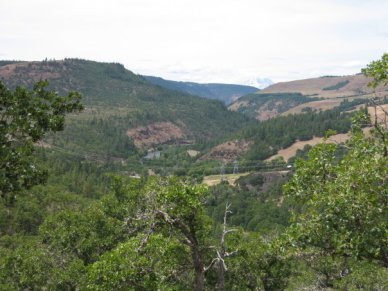
Then tell your friends and make sure they don’t miss out. Deadline to sign up is April 27. See you there!
April 7, 2016
Wild Garlic Mustard: A Rare & Tasty Treat!
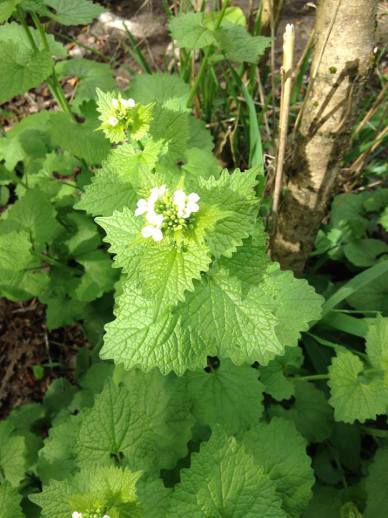 Garlic mustard, Alliaria petiolata, is a wild edible green I am familiar with from the old days when I lived in New York and New Jersey, where it gets a lot of press as an “invasive” Eurasian weed. I had not encountered it here in Portland, Oregon, at all over the eight years I have made this place home — until now!
Garlic mustard, Alliaria petiolata, is a wild edible green I am familiar with from the old days when I lived in New York and New Jersey, where it gets a lot of press as an “invasive” Eurasian weed. I had not encountered it here in Portland, Oregon, at all over the eight years I have made this place home — until now!
On my way to a nettle patch, I was excited to see it growing in the sandy soil beneath some cottonwood trees, next to the Sandy River at the dog park out there, known as Thousand Acres and Sandy River Delta.
I knew this was garlic mustard because the plant had alternate, heart-shaped leaves with scalloped edges and the tell-tale flower structure of a mustard family plant: four petals in a cross shape. When I picked a leaf and crushed it, it smelled like garlic mustard, too. I reason that this must have been a two-year-old stand of this plant because in the first year it stays low to the ground as a basal rosette. They grow up to 3.5 feet tall.
I had my scissors with me, since I was planning to get stinging nettle. I harvested the leaves and flowers by snipping them into a paper bag, leaving the stems behind. (The stems are edible, but when I tasted them, I found them unappealingly pungent.)
As soon as I got home, I turned the foraged garlic mustard into dinner. I sauteed it with stinging nettle greens, olive oil, garlic, and spaghetti squash, adding Himalayan pink salt and some cheese to enhance the flavor. And it was delicious! Good for me, too: A nutritional analysis of garlic mustard found that it is high in Vitamin C, carotenoids, minerals, and fiber.
Spring is such a great time to be a forager around here! After a winter spent eating kale, it’s really nice to get the fresh variety in my diet.
You know what else I am looking forward to this spring?!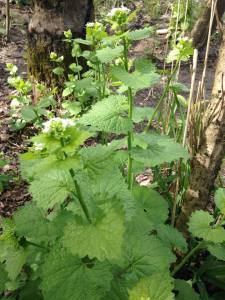
WILDERNESS FIRST AID training with disaster herbalist Sam Coffman, May 13-15! This is an amazing three-day camping intensive on absolutely beautiful private wilderness land. I couldn’t be more excited. I’m flying in Sam, an expert former Green Beret medic who now goes to third-world countries to treat people with herbs. And he’s coming all the way from San Antonio, Texas, to teach! Join me, get the details & register here!
April 5, 2016
Wilderness First Aid with disaster expert Sam Coffman!
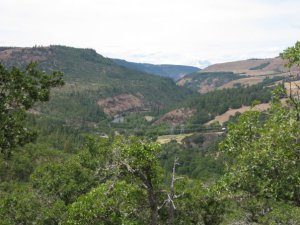 What if I told you I was flying in a former Special Forces Green Beret medic — and current disaster herbalism expert — to teach a three-day Wilderness First Aid certification on gorgeous private land near Klickitat, WA next month? Would you like to join me in learning from the most qualified herbalist there is?!
What if I told you I was flying in a former Special Forces Green Beret medic — and current disaster herbalism expert — to teach a three-day Wilderness First Aid certification on gorgeous private land near Klickitat, WA next month? Would you like to join me in learning from the most qualified herbalist there is?!
It’s true & official: None other than Sam Coffman is going to be teaching this three-day camping intensive May 13, 14 & 15!
Sam has taught wilderness first aid certification, remote and post-disaster herbal medicine, urban and primitive survival skills and self-defense for over two decades. He is co-founder of the non-profit organization – Herbal Medics – that travels to remote areas in Nicaragua as well as medically underserved urban areas in the USA, providing herbal medicine clinics, off-grid and salvage-based engineering solutions (water purification, sustainable power, sustainable agriculture, etc.) How fortunate we are that he is coming to share his amazing knowledge with us here in the Pacific Northwest!
 Wilderness First Aid is a 24 hour course taught over 3 days (8 hours per day) and includes both a conventional 16-hour Wilderness First Aid (WFA) Certification through Emergency Care and Safety Institute (ECSI) as well as more than 8 hours of herbal first aid training.
Wilderness First Aid is a 24 hour course taught over 3 days (8 hours per day) and includes both a conventional 16-hour Wilderness First Aid (WFA) Certification through Emergency Care and Safety Institute (ECSI) as well as more than 8 hours of herbal first aid training.
Herbal First Aid information is integrated into the curriculum in order to create a holistic model of remote or post-disaster care that emphasizes the essentials of first aid care while also introducing fundamental plant-medicine concepts that apply to austere or post-disaster environments.
This tuition for this course includes two books:
1) Wilderness First Aid Field Guide, 2nd Edition
2) The Herbal Medic, by Sam Coffman, First Edition
16-hour WFA Certification subjects include:
Primary and secondary survey
Extrication – Field expedient methods for moving a victim, basic knot/lashing concepts
Diagnosing and treating a wide variety of trauma and life-threatening situations
Splinting & bandaging plus ankle and knee stabilization for walking
High altitude injuries, heat and cold injuries
Disease and infection
Snake and insect bites & stings
Shock
Head injuries
Water purification & fluid replacement
First Responder planning, building first aid kits and more
Herbal First Aid subjects include:
Fundamental herbal care concepts – the necessary shift in thinking
Wound Care and Infection Management using herbs
Injury, shock, pain and herbs
Respiratory herbal first response
Gastrointestinal herbal first response
Urinary herbal first response
Planning, preparing and administering herbs
Hands-on training and practice is emphasized. The certification testing is both hands-on (done as teams) and a written test.
Wilderness first aid certification is provided by ECSI, which is created, endorsed and underwritten by the American Academy of Orthopedic Surgeons (AAOS) and American College of Emergency Physicians (ACEP).
A national ECSI certification card is issued which is valid for 2 years.
Prerequisites: none.
Accommodations: Camping on private wilderness land along the Little Klickitat River, among pine and white oak, lomatiums, lizards, and yeti. Bring your own tent/gear.
Food: Gluten-free vegan or meat meals will be provided for an additional $60 (full breakfast, full dinner, and hearty snacks that can be made to cover lunch), or you can just bring your own food. *If you choose this option, let us know if you want vegan or meat, plus any food allergies you have, when you see the pop-up window during registration asking if you want to add special instructions.
Recreational opportunities after class include bonfire, hot tub, swimming hole, and hiking.
The course address will be provided via e-mail 24 – 72 hours after we receive your payment.
Only 25 spots available and this class will sell out. REGISTER HERE.
[Link fixed]
March 22, 2016
DIY Equinox Bitters: A Spring Digestive Blend!

Burdock!
Happy equinox! As the flowers on the trees profess to tell us, this holiday is really the mid-point of the spring season rather than the very beginning. Because it sits between the polarities of cold inward winter and the hot active energy of summer, it’s also a time where we find balance.
The element associated with springtime is air. Air brings dynamic impetus and expansiveness to our lives. A great question to reflect upon right now is, how can we cultivate greater balance, forward motion or expansiveness in our lives?
At a potluck celebration for my First Ways apprentices, we talked about the equinox as the time planting new beginnings in our lives. We celebrated with a potluck and ceremony. We put our intentions of what we want to cultivate in our lives into Reiki-infused seeds and then we planted them together in apprentice Samira’s front yard. We also honored the air element with a lovely wood flute performance by Brandon Forrest Lapier, who brought us a magical Sasquatch story as well! Then we had a delicious feast. I made stinging nettle sauteed in coconut oil with spaghetti squash, garlic, onion, nutritional yeast and sea salt. Apprentice Sharon made stinging nettle saag! Apprentice Terri brought elk!!! Everybody made something delicious. And the brownies and cookies were amazing.
From the herbalist’s perspective, spring is a time for making bitters! Bitters are a tincture blend of bitter and aromatic herbs that stimulate the release of digestive fluids in the body, strengthen our ability to nourish ourselves, and help our organs assimilate nutrition from the food we eat. Bitters are one of the herbal remedies we can take when we are healthy and want to stay that way. Most herbal traditions, including Ayurveda and Tradition Chinese Medicine, consider digestion the cornerstone of a healthy body. Signs of problematic digestion are bloating, loose stools, and constipation. Bitters can help all of these things, and the liver, too.
Here’s a formula I recently made and like:
1 oz dried Dandelion leaf – bitter, detoxifying cooling herb for the liver, kidney and digestive system
1/2 oz dried Burdock root – bitter, detoxifying cooling herb for liver, blood & skin
1 oz dried Chamomile flower – aromatic, calming/soothing & carminative (gas-dispelling), cool
1/4 oz dried Orange peel – aromatic, warming, stimulates qi (life-force energy), enhances flavor
1 tsp Fresh grated ginger – aromatic, warming/stimulating, carminative, harmonizing
Directions: Combine herbs in a quart-sized glass mason jar, filling the jar 20 to 25% of the way, and then pour vodka (100 proof) or brandy and 1/4 cup of glycerine (as a sugar-free sweetener) as solvents to extract the medicine. Store in a dark, cool (but not cold) cabinet for 2 to 6 weeks, then strain and use the liquid, storing it in a dark glass bottle. This tincture will last indefinitely, for years.
December 19, 2015
Review: “Gathering” DVD by Nathan Carlos Rupley
Nathan Carlos Rupley has been on my radar as a Pennsylvania-based foraging blogger since before I wrote my book, so when he announced his intention to make this video and sought crowd-funding to bring it to life, I was excited for him. Life and obstacles got in the way, and it took him about three years to get the DVD filmed, edited, and finished. There was much suspense.
I anticipated that this would be a high-quality instructional resource because in social media forums, where Nate is active, he has earned a solid reputation as a careful and conscientious educator with great respect for accuracy and discernment, often warning newcomers that foraging resources are not all equal. I agree. Indeed, when foraging started to become a hot topic a few years ago, publishers were eager to cash in and many writers were too, and some people without any experience simply approached it as a reporting gig, putting out articles and books based entirely on other people’s descriptions. The problem is, the Internet is filled with rumors and hearsay and so, amazingly, are some published books! During my own wild food week, I discovered that the oft-touted Peterson Field Guide to Edible Wild Plants had led me astray in claiming that plantain was just like Swiss chard. Anyone who has ever eaten plantain leaves knows that couldn’t be farther from the truth. I often see inaccuracies in the press, too. A couple years back, one of the local alternative weekly newspapers here printed an article on edible plants that was shockingly inaccurate, filled with false information. (Why did they not think to consult John Kallas, myself, or other local experts?) This is a subject where discernment is important and firsthand experience is golden.
Nate did not disappoint. I found great value in the beautiful close-up detail he was able to capture with his camera, which magnified minute details that are hard to see on plants with the naked eye, and that is especially useful for older eyes or anyone who is even slightly visually impaired. The clarity of the footage was truly striking and made me feel like I was outdoors in the warm summer sun instead of indoors watching it on cold autumn night in my living room. Nate’s passion for fine art photography is a great asset that has served his film, and viewers, well.
I also enjoyed the gentle guitar strumming that accompanies his voice in the background. Paired with the sun-lit shots of plants, it made me feel transported, like I was in Pennsylvania, relaxing outdoors in the summertime. The information is presented in a very direct fashion. He is straightforward and keeps the focus on the material, no joking around. All the facts and nothing more.
A nice feature is the clickable home screen that allows you to learn about the plants in any order at your leisure. You can mentally nibble on chickweed and then go back to the menu screen and follow your whims to purple dead nettle or wild ginger, as each species is given its own chapter. The DVD can also be watched in one sitting.
I liked this DVD and think of it as an accurate and useful contribution to the sea of foraging resources. Nathan is a good resource because he has personal experience, describing himself in the introduction as “an aspiring hunter-gatherer.” He is careful to tell us that he bases all facts in his DVD on what he has learned from experts who also have documented their extensive first-hand knowledge, including the highly respected Sam Thayer, Steve Brill, John Kallas, Thomas Elpel, Ellen Zachos, and Daniel Moerman. (Full disclosure: To my pleasant surprise, he also recommended my book, Dandelion Hunter, in his concluding chapter in the DVD while offering resources for further study).
I will encourage my apprentices to watch this, and I think it would make a wonderful gift for that survivalist, primitive skills enthusiast or naturalist in your life. You can order it for $10 to $15, depending on your packaging options, through his blog or via his Mycorrhizal Films website here.
***
Upcoming Events with First Ways:
Winter Solstice Meditation: “Leap Into the Void,” Guided By Ganja!
Join me tomorrow night, Sunday Dec. 20, for a Reiki-infused guided meditation to get to know the plant spirit of ganja. Yes, ganja. In India, the “sadhus,” or devout ascetics, are known for their love of ganja and their frequent smoking of it out of chilams for spiritual purposes. Indeed ganja is considered a holy plant and has been celebrated as a catalyst of peace, bliss, and enlightenment in the east since the ancient times, and even appears in the Vedic texts. “It is only fitting that…the guru to bless us with Shaktipat [psychic transmission of divine grace] comes in the form of an ancient sun-loving plant that has as its most intrinsic attribute the power of consciousness-raising.” – Joan Bello, author of “The Benefits of Marijuana” The event is sponsored by cannabis companies Titrate and Hifi Farms. Space is limited and as you might imagine, this is quite popular. Event details and tickets are here. If you want to come, I highly recommend securing your ticket in advance through that link.
First Ways Apprenticeship Program
A few spaces are still left for 2016 program. Save $300 when you enroll by Dec. 31. Find out more info here.

